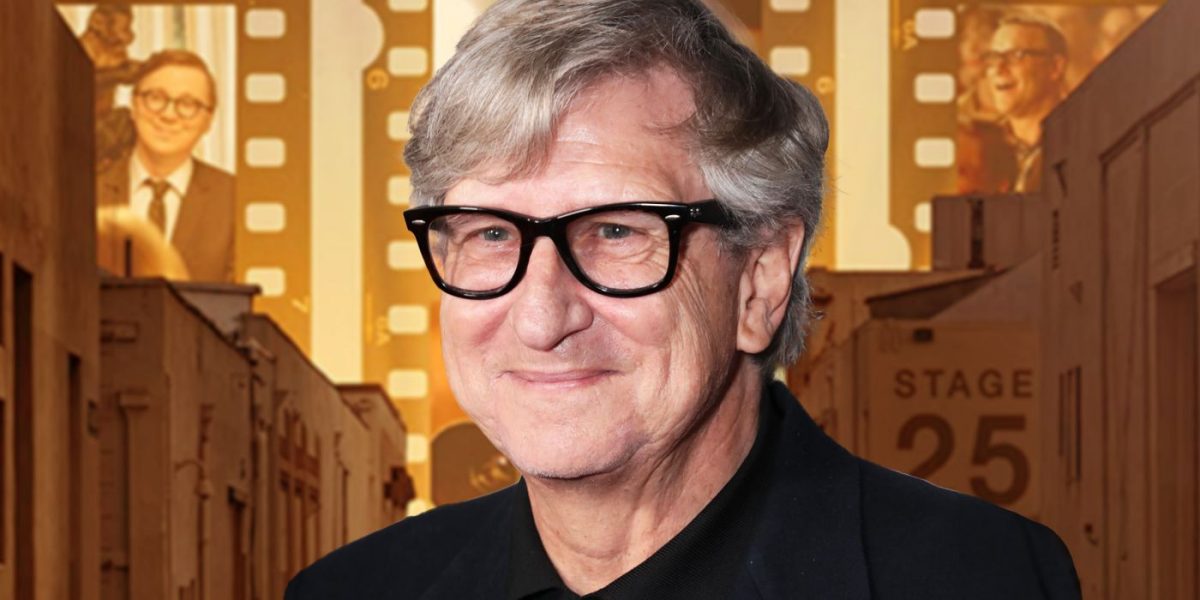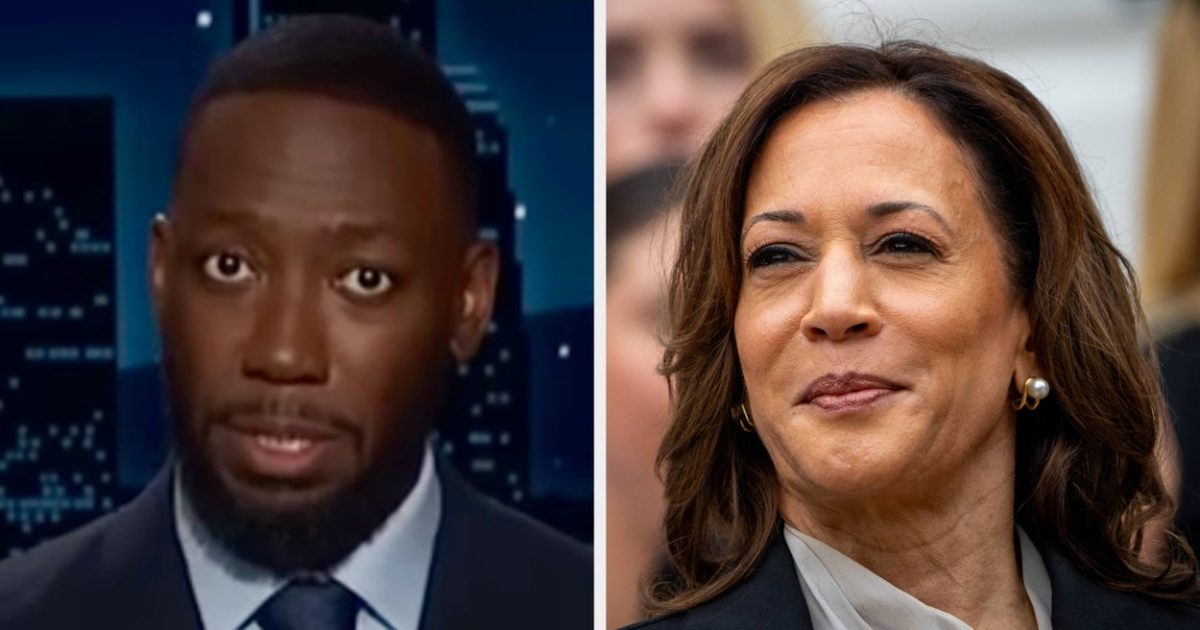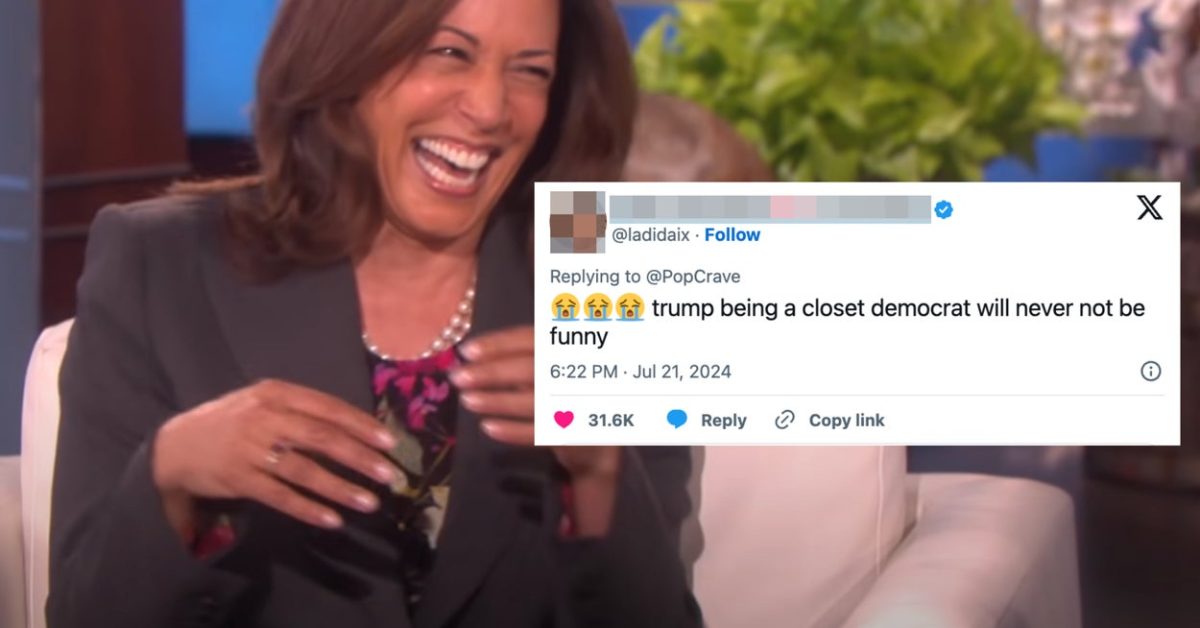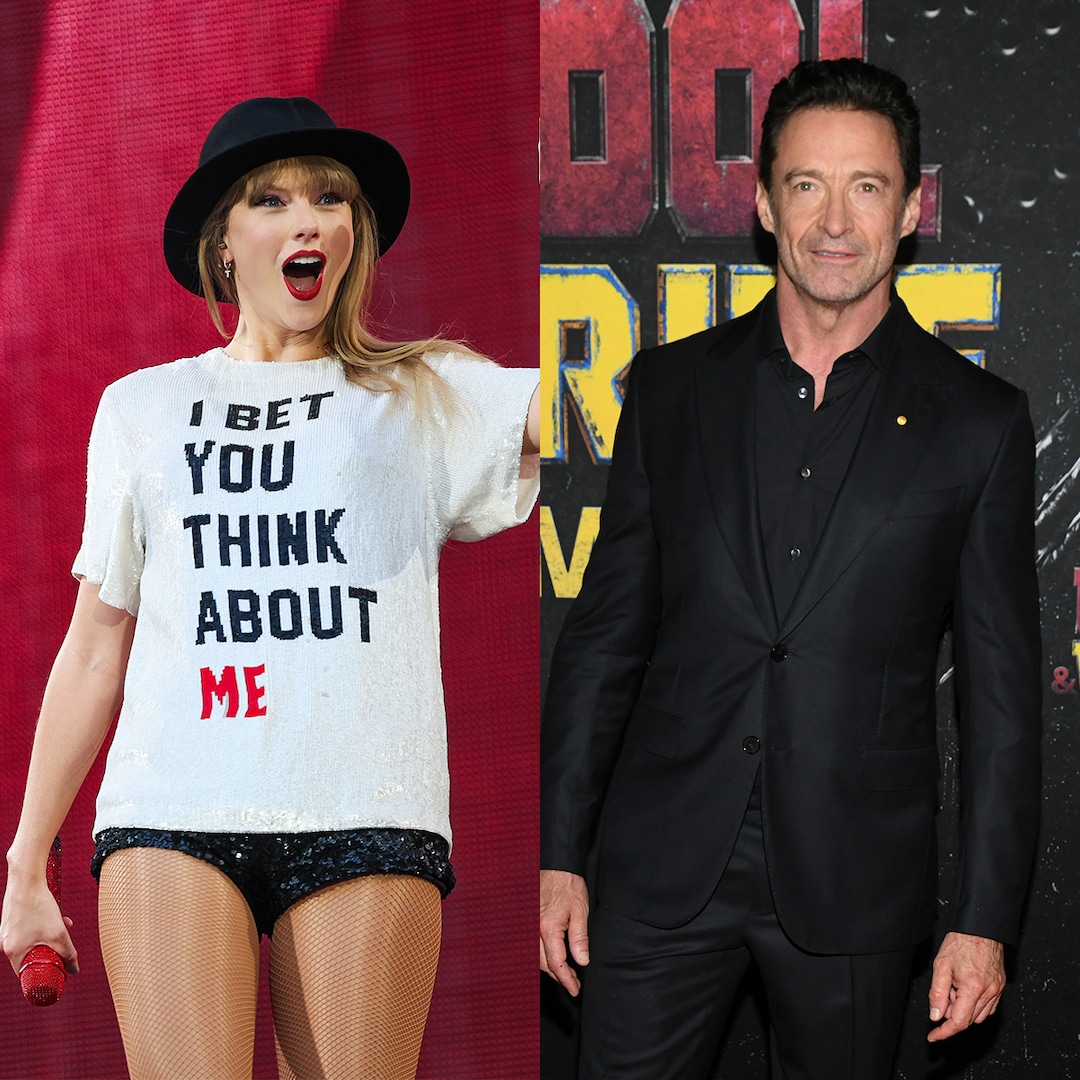
Rick Carter on Recreating Steven Spielberg’s Childhood In The Fabelmans
Jan 14, 2023
From three-time Academy Award-winning director Steven Spielberg, The Fabelmans explores the filmmaker’s own adolescence through the eyes of the fictional Sammy Fabelman. From the moment Sammy is first star-struck by the silver screen, through his family’s most difficult years, we experience a young director’s journey to crafting some of the greatest films of all time.
Thanks to production designer Rick Carter, who’s worked with Spielberg on a number of projects, audiences were transported back to a post-World War II America when the cinema was still a fairly new adventure. From one house to the next, Carter’s designs brought snapshots to life and captured the whimsy and even heartache of the film. Co-written with another frequent collaborator and Pulitzer Prize-winning writer, Tony Kushner, and bolstered by an ensemble cast that features Paul Dano, Michelle Williams, and Seth Rogen, The Fabelmans is guaranteed to become another Spielberg classic.
COLLIDER VIDEO OF THE DAY
Following the theatrical release, Collider’s Nate Richard had the opportunity to speak with Carter about the making of the movie. During his interview, Carter discussed how the crew was given access to Spielberg’s archive of personal photos, and how he designed sets with a three-act vision in mind. He shares the importance of keeping the sets intimate, how working on a film like this differs from productions like Jurassic Park and Star Wars, and how he created director John Ford’s office. Carter also speaks on his very first job with Spielberg leading up to The Goonies and his time on Back to the Future. For all of this and more, you can read the full transcript below.
COLLIDER: I know the first movie that you really worked with [Steven Spielberg] on was Empire of the Sun. Am I right?
RICK CARTER: Probably the easiest way is just to back up on a bit from that. I worked with him on The Goonies when I was an art director. He was the second unit director. I got assigned to help him on his second unit. That’s how I got to know him, which was, of course, great to have that be what my assignment was. Then that led to the Amazing Stories, and that was two years. We had worked together on a couple of his episodes, plus he was involved in almost all the other episodes. We got to know each other during that time.
During that time, he was doing some additional shooting for Empire of the Sun that (production designer) Norman Reynolds had designed. I just helped him out in Bakersfield [to] do some additional scenes. It wasn’t very much, but it was a day out in the desert of Bakersfield. That was the first time on a movie, but it really [was] predated with Goonies and Amazing Stories, and then it launched from there.
Image Via Universal
Then I also saw that you worked a lot on Back to the Future, a sequel to that.
CARTER: Yeah.
Can you maybe go into a little bit of that?
CARTER: Well, through Amazing Stories I met (director) Bob Zemeckis because he did one of those, and we had a good time with each other back and forth. Then when he wanted to do the sequel to Back the Future, he wanted to use a different production designer than the first one. The first one was Larry Paul, who had done a fantastic job. Anyway, he reached out to me to do that movie, and at the time, both two and three were all one movie, one huge movie that went all over the place, into the future, back to 1985, ’55, back to 1885, back to 1985.
It was a fantastic introduction to feature film. It was so big and so explosive. That was my introduction into making movies, was to work with Bob again, only on a big scale. It was, of course, under the [Amblin Entertainment] umbrella as well. It was really the forming of, for me, a family unit within work, where I had Steven and Bob. Really, that was my next 20 years, was just the two of them. What that did for me was allowed me to learn how to production design, and with them in particular.
They didn’t beat me up. When I say that, it’s because anything you do in a movie, especially in the aesthetics, with cinematography, or editing, or scoring, anything, you’re not going to be good for all people, whatever you come up with. You’re going to make mistakes, as you’re a young person. You’re going to make mistakes as an old person, too, but as a young person, you’re susceptible to feeling like, “Oh, I can’t really do this. I’m not good enough.” They never put me in that position.
For 20 years, I felt I could grow with them, and that they were growing. Imagine if you’re in the slipstream of a major force like Steven Spielberg. You’re not taking all the headwind, but you also, when you get out of that, you can go over and be a part of Bob Zemeckis’s vanguard movement into the culture. That’s kind of what I did. Then I would try to create space in between for my own life so I wasn’t just burning out. I hope that describes sort of what that experience was.
Oh, that was perfect. Also, I know with The Fabelmans, this is a very personal project of Spielberg’s. I heard this anecdote about him sending you pictures of his home or something like that. Could you maybe go into that? Was that true? Did I hear right about that?
CARTER: Oh, yeah. Well, he really gave us access – starting with me, but the costume designers and some of the other people – to his archive that has a lot of his old photographs put together. We had the ability to see some of those snapshots inside some of the houses, particularly the middle house, which is the Phoenix house. Some from the earlier New Jersey era. The last era, there were no real photographs at that time, or not very many.
Particularly anchoring it with Phoenix, we were able to get a sense of what that part of the journey was and make each one of the houses reflective of, in a sense a three-act structure, for the development of his life and his career. We were always looking to try to make it into the Fabel version, as well, because it’s a movie. It’s not literal. It’s a movie that has movies within the movie. The movies within the movie, with this Fabel version, start to construct a world that… it’s a different type of production design, I will say, than I’ve done before.
There’s not too many actually like that really, where you reference the very medium that you’re doing while you’re doing it, and you’re trying to still not have it be intellectual, but emotional, so that when he’s the young Sammy looking at things that he doesn’t want to see, and he can’t unsee them, that’s really for us, the audience, feeling the same way. The production design was not only the type of thing you normally think of as just, ‘[what’re] the sets out on this broad level,’ or maybe if it’s Avatar, you go all the way out to other planets, or different locations, in different fantasies, or historical pieces.
This was more having this baseline of a three-act structure with an epilogue down in Hollywood, the sort of promised land. Really, the production design was the verticality of going deep into each place that he went, so that it became very intimate. That was the thing that to Steven was the most important, was to try to make it resonate for him. When he’s coming into this, in a sense, artificial version of his own life, it wouldn’t feel that way.
Just to reference something I hadn’t thought until just this moment, actually, is, if you remember in the movie Ready Player One, where – and I forget the guy’s name, he goes back, he sees these recreations of his life – there’s like these Tableau displays. He even goes back into scenes and he rewatches them. That’s really a precursor to exactly what this movie became. I’m already working on that idea, I guess.
Another one I really wanted to ask; I know this one probably wasn’t as personal a set design for Spielberg – I know it’s a personal scene – is the John Ford scene. What was your basis for that? If you just had access to photos of his old office or things like that? Just had to ask.
CARTER: Well, it’s interesting. There is a creation of an idealized version of his office in a movie that John Ford directed. Now I’m blanking on the name. I think it’s like Only Angels Have Wings. It’s with John Wayne. Ward Bond is an actor who plays John Ford’s character in a movie that John Ford is directing. That office is quite ostentatious. It has a lot going. It’s much bigger and much more ornate. The version of the office that we did was John Ford, later in his years, [with] just some of his stuff around him.
What was always important was that it has little plot points to it. It’s one of these times where the set actually depicts the plot and it’s referenced in words. But actually, in the first part, it’s not, which, he goes into the outer office, and there he sees all these movies of, essentially, his favorite filmmaker ending on the one that you’ve already seen a clip of in the movie, which actually is, again, about not just the movie he made at that time, but standing up to a bully.
That’s actually what’s going on in the stagecoach robbery within that movie. You’re introduced to, ‘Oh, here’s the person that was my inspiration way back when,’ just to begin to make movies, at all, that he was drawn to. Then he walks in and there’s the man himself, his Oscars, and his cigar, and all that fun stuff. What he imparts is not an emotional message, seemingly, on the surface. You’ve been through all this emotion, and Sammy has just told you that he’s chaotic in his mind. ‘What am I supposed to do, or to think? I don’t know.’
What John Ford is basically saying to him is, ‘You use that drama, but you use it in a graphic way that is not indulgent. It’s: what are you giving to the audience?’ He’s basically saying, ‘Here’s a specific example. You see these pictures I’m surrounding myself with. They remind me that if the horizon’s at the top, it’s interesting. If it’s the bottom, it’s interesting. In the middle, it’s not,’ but really that’s a metaphor for just the emotion that’s all worked out and balanced. That doesn’t make Ford the drama of cinema. What he’s saying is, ‘The drama comes from these lows and these highs, and that’s what makes it interesting. Now, get the fuck out of my office.’ That’s what releases him because he realizes he has a form to put all that chaos into, and that’s the cinema itself. He even has certain crazy little axioms that he can rely on at certain times, at least to get him started.
It’s a pretty wonderful scene to have created as a production designer, because it’s really just the way the subtext of a life that you talk about in, let’s say, in another kind of movie, dinosaur movie, or a fantasy, and then you try to bring the characters to life with emotional situations. That subtext is now the text of the movie, The Fabelmans. In that office, what’s interesting is that the set decoration is the text. It’s commented on, but really it is telling you what the story is at that point. If that makes sense.
That was long-winded. Anyway, a lot goes into these things that you don’t necessarily think about when you watch.
You talked about the challenges between making this movie versus making something like Jurassic Park, or something like Star Wars: The Force Awakens, or something like that. Would you say that this movie was pretty challenging in terms of getting it right and getting everything approved? You get what I’m kind of asking?
CARTER: Absolutely. The other movies on the detail level are very important. It’s always important what the detail looks like, but it doesn’t necessarily have the same personal resonance that if you have something that’s presented to you, if you’re the director, and you’re supposed to put it in your movie, and it doesn’t ring true, and you don’t know necessarily what it should be, but that doesn’t ring true, that becomes more emotionally jarring.
The target for a production designer, a set decorator, in this case, is to have the director and the actors be able to not only relate to it in general, ‘my character would like this,’ but to be inspired that, ‘Oh, that really is the way I would do that as the character,’ or the director in this case, Steven, can not only remember it, but use it as a bit of the business that the actor gets to create in a moment. Let’s say, having the tablecloth, with the plastic and paper plates, and wrapping it up; those things become actual, almost, not just actor business, but points of reference, that she’s saving her hands because she’s a pianist.
[There are] multiple levels in this movie, and that’s why I describe it often as a vertical movie, where the details of what you see are so important because they resonate emotionally. It’s not to say that other movies don’t have that, but it’s just at a different level on a Star Wars movie. It could be really a great gimmick or a great design, but that’s just different than having it be so emotional to somebody’s remembrance of their life.
Then I have just one other question because I know Spielberg, he has so many other movies in the pipeline. Has he reached out to you yet about any? I know he is working on Frank Bullitt?
CARTER: I think it’s all unknown. Also, Steven casts me, I don’t do all of his movies. I’ve done a lot over the years, and that’s been great. He really, between myself and others, and particularly (production designer) Adam Stockhausen, who works so well with him, I think he’ll look at the movie that he wants to make, and he’ll see which one of us is available. Or he has an inclination, or if it has to be somebody else. As of right now, I think he’s just sort of let it all…
He’s got movies he’s certainly developing, but which one he goes towards, I think he’s giving himself time to let this one play itself through. The answer, I don’t know.
Okay. Well, thanks so much. It has been an honor getting to talk to you. Once again, congratulations on this movie. It was my favorite movie of last year. I’ve watched it like three times already now.
CARTER: Well, that’s great. Thank you. I think that’s great, especially if younger people watch it and then see it as something that can inspire them to do what they’re doing, and not feel that they should feel a connectedness between their lives and the work they’re doing. That’s the hidden message in there.
It definitely spoke to me in that kind of regard.
CARTER: Good. Keep the horizon high or low if you’re doing the drama. Then in your real life, try to mine the middle.
The Fabelmans is in theaters now.
Publisher: Source link
Lamorne Morris Thinks Kamala Harris Has This Advantage Over Donald Trump
Trump said that President Joe Biden, who dropped out of the race on Sunday while recovering from COVID-19, never really had the infection. “Really? Trump thinks Biden never had COVID?” Morris said on Monday. “You don’t pretend to have COVID to get out…
Jul 26, 2024
Khloe Kardashian Is Ranked No. 7 in the World for Aging Slowly
Khloe Kardashian's body is out for more than just revenge. In fact, the 40-year-old is one of the world's slowest agers—a revelation she learned after taking a blood test to determine her body's biological age compared to her calendar age.…
Jul 26, 2024
Reactions To Trump’s Kamala Harris Donation
Just as many white Americans used their Obama vote to excuse their internalized racism, Lauren Boebert seems to have adopted this same ideology, ignoring Trump's long record of racism against African Americans, Mexicans, Hispanics, Native Americans, Muslims, Jews, and immigrants, and discrimination against women and…
Jul 25, 2024
Hugh Jackman Reveals What an NFL Game With Taylor Swift Is Really Like
Hugh Jackman is happy to fill any blank space in Taylor Swift’s NFL game suite. In fact, the Deadpool & Wolverine star recently detailed his experience attending a Kansas City Chiefs game to root on Travis Kelce, alongside Ryan Reynolds,…
Jul 25, 2024











